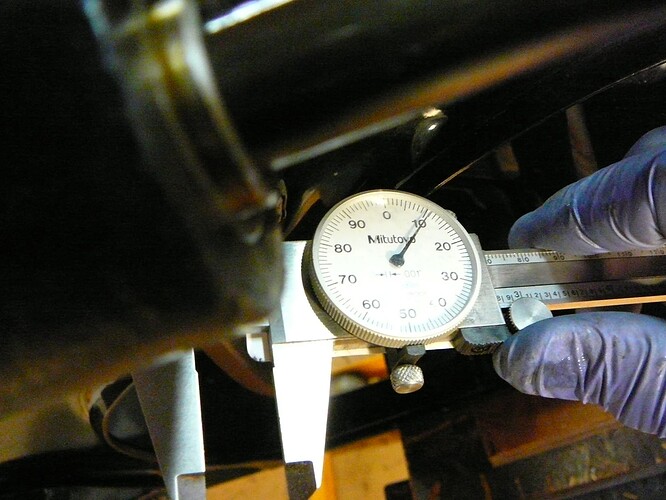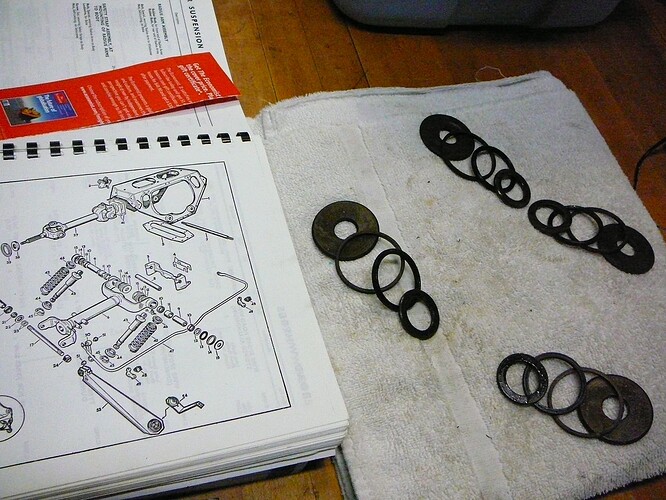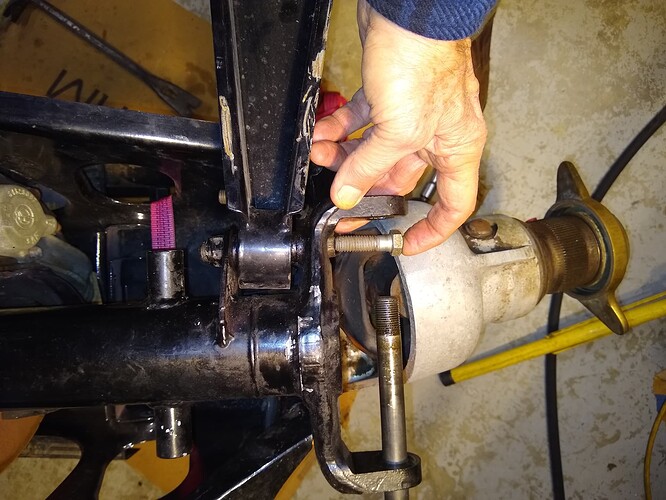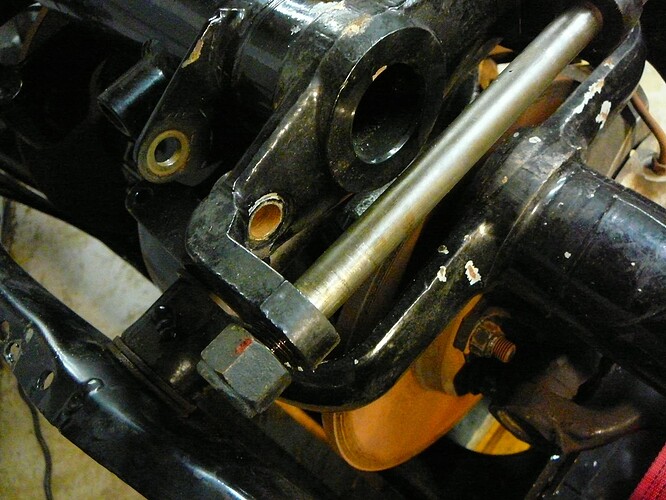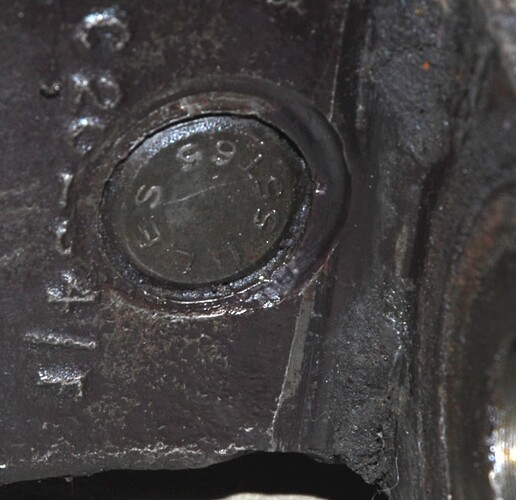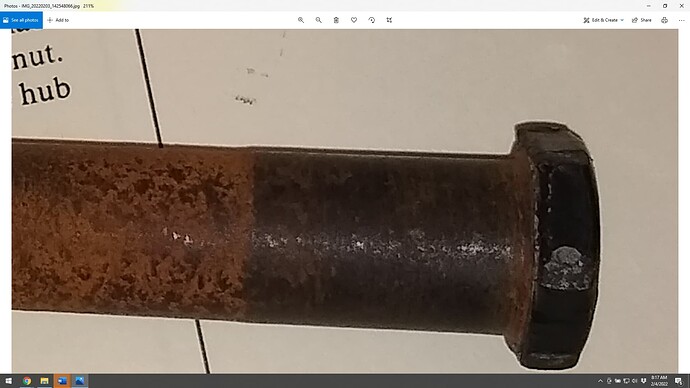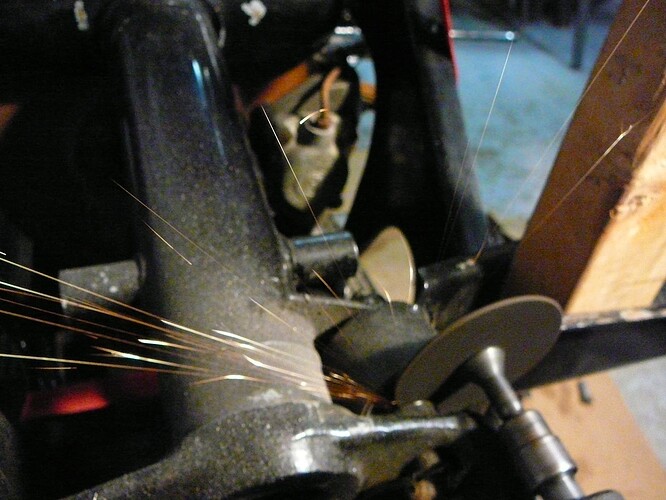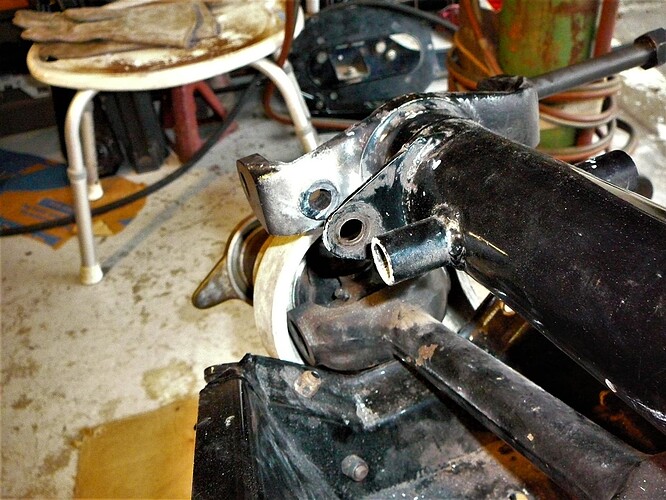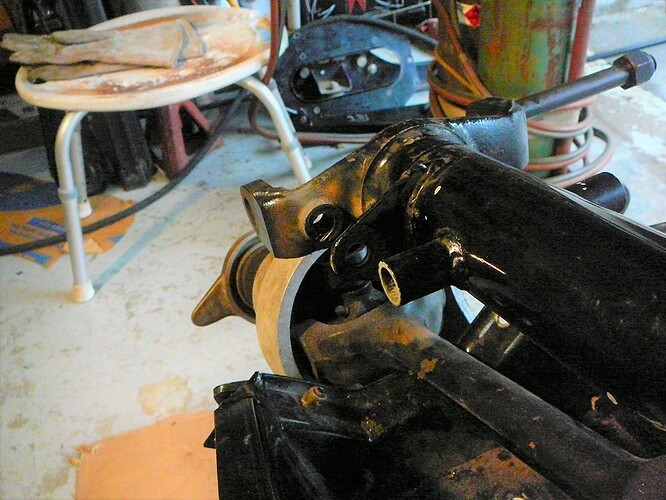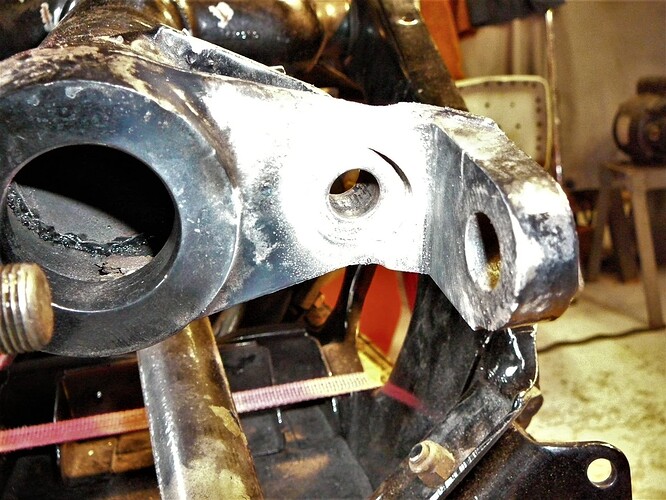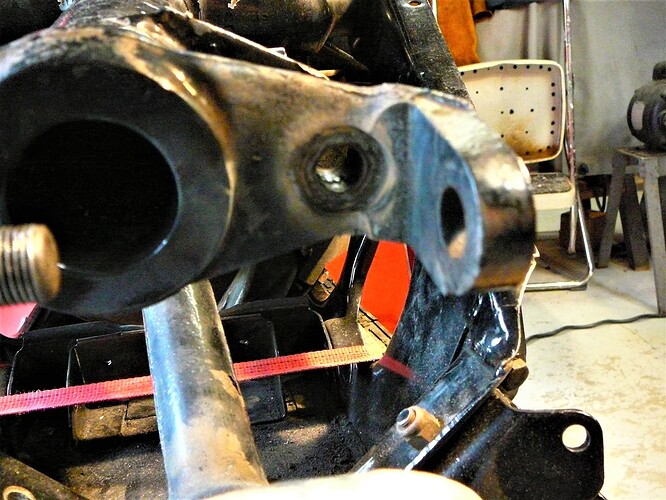Instead of answering individually, allow me a combined answer.
Steve, all four holes in the sides of the cross member (cage) have bushings in them Indeed this is the cause of my having to pound the fulcrum shafts out. Pics:
I could not re-insert the old shaft into these bushings and I could not insert the new fulcrum shaft, nor the 0.622 steel rod I bought. I could on the one side but not the other. These bushings are not round but are oval between 0.611" and 0.622" or so. I did not know they are not OEM. I can ream them to fit.
Dave, I know that’s what you did and I have dowels in my shop. But I was whaling on the steel drift and wood would not stand up to that, nor copper pipe. On copper pipe there is several types: L, M, and K. I forget the sizes but the Brits are lucky as their 15mm works just fine.
Danny, 23-1/4" then. I’ll remember that. I know I would not be happy chasing IRS parts down the road.
Fortunately I have only “driven” it in my driveway although I did make one trip to the bottom and back - 750 ft each way and coming up the drive was a bit scary with all sorts of noises. I knew the IRS had to come out!
More update:
My observation on the stack-up of seals and spacers was, certainly, incorrect. I hung a rag between the two sides thinking it’d keep parts separate. Not so. It all looks like it’s there, seals being trash notwithstanding.
One of the 8 axle bolts is longer than the rest.
Below is a pic of the old Fulcrum shaft attempting to go in the bushing that only measures 0.611. Not happening.
The rear of the cross member has special customized bolt holes in it. If you cannot line up the bolts, simply drill new holes. You’d think I’d have thought of that!
I moved on to the left side of the crossmember today. Thought I’d first remove the bolt going through the small radius arm bushing. Think again. The head is totally destroyed. On the other side, I simply used my impact drive to spin the bolt out of the small yoke/radius arm joint. On this side, the busing is age-bonded to the bolt. I can’t get a good strike on the bolt because of the shock studs. So I have two ideas: Weld a bolt to the ruined head or use a cut-off wheel on a die grinder to cut the bolt. What do you think? Maybe I could also grind the head off.
Well, that’s it for today. Back at it tomorrow.



